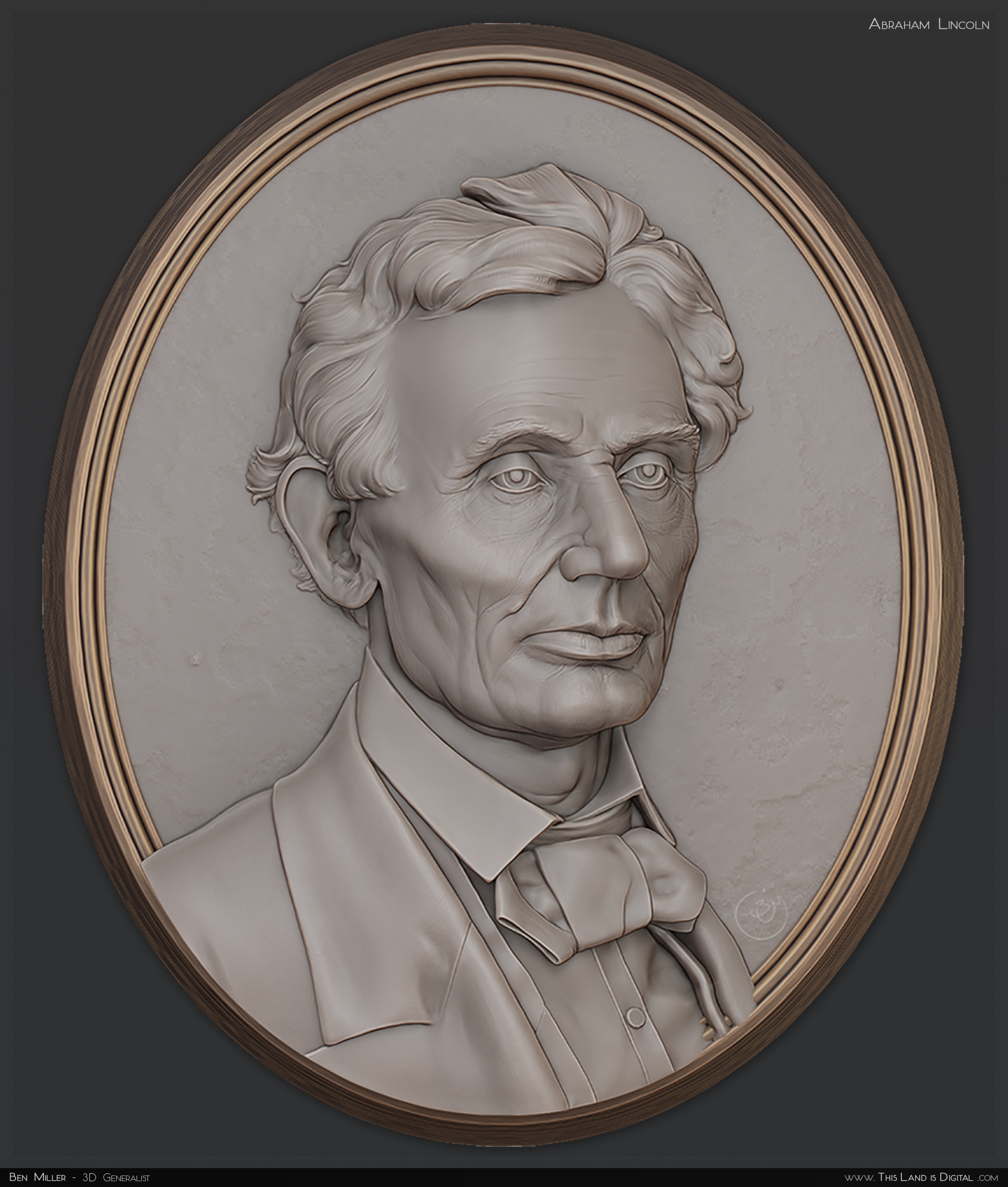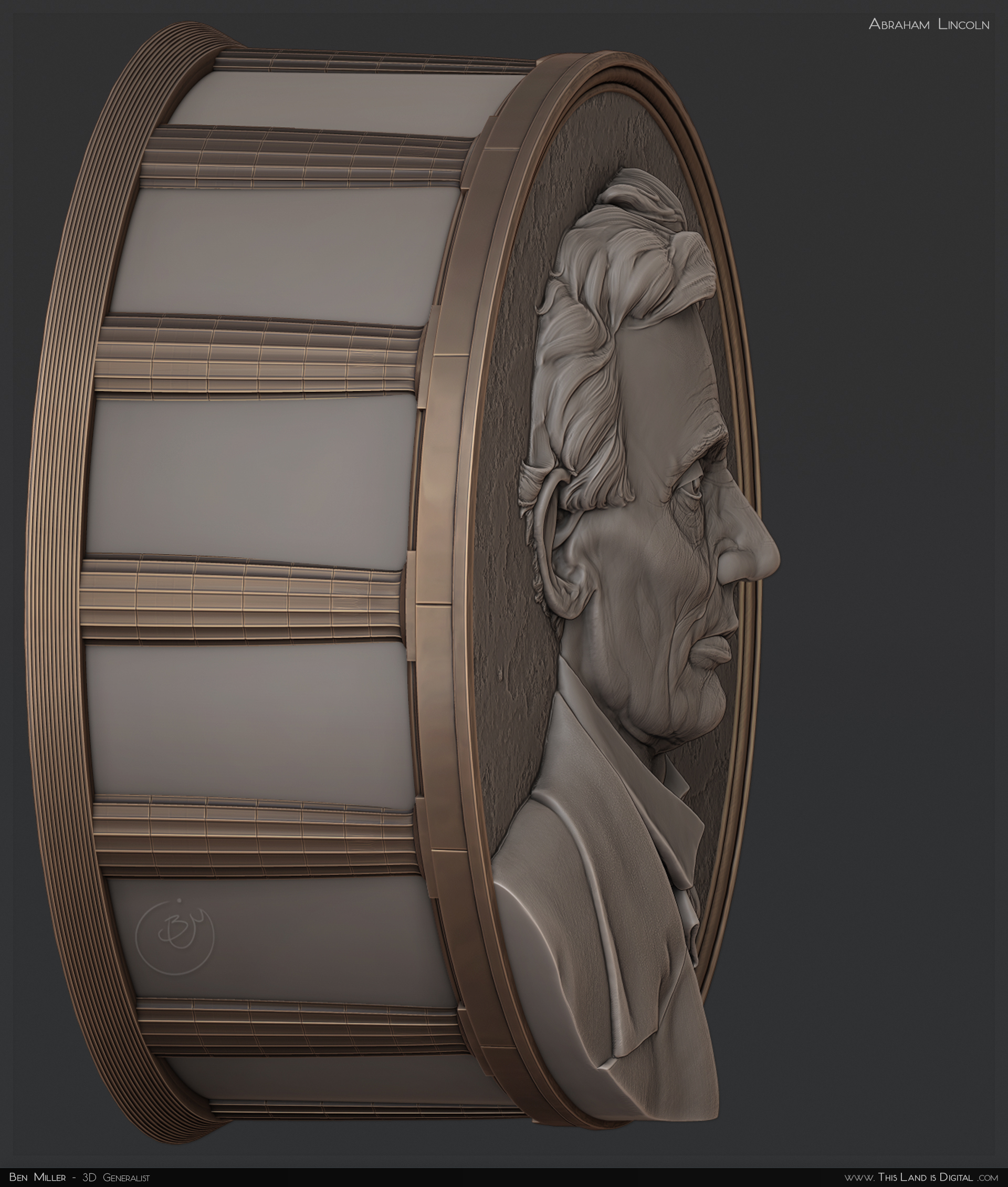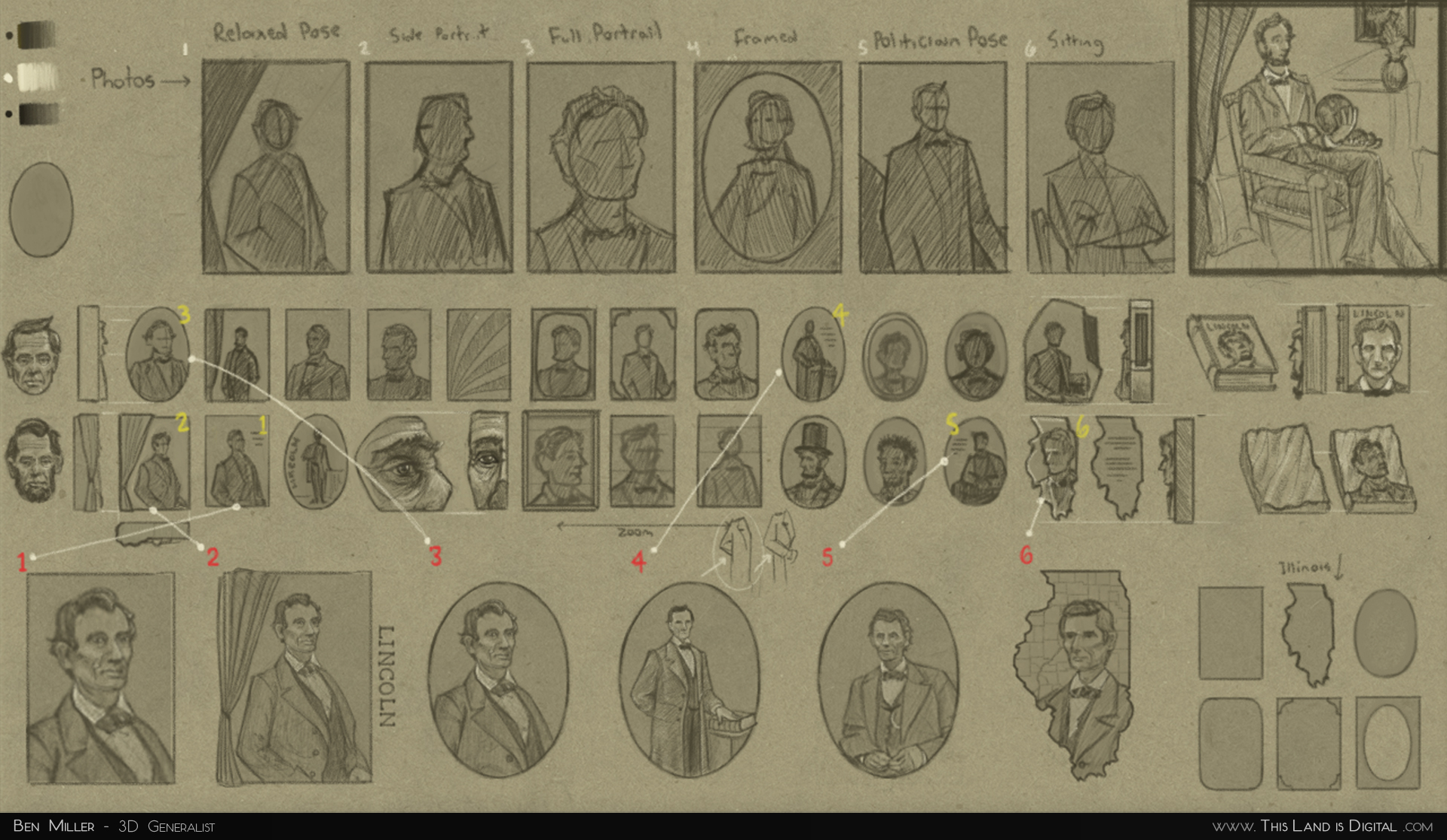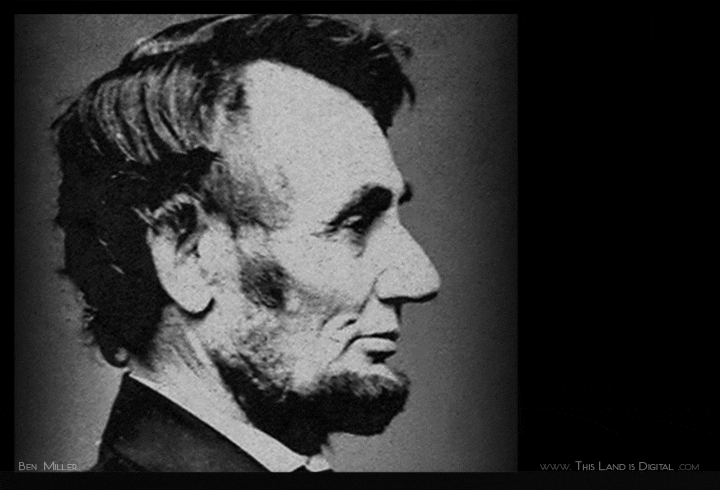Abraham Lincoln in Relief
ZBrush, Photoshop (2014)
Abraham Lincoln ranks high on the charts of recognizable faces. In the United States, we see him almost every day on coins and bills, carved into stone, and through an endless stream of caricatures. Give a figure long legs, a beard, and a top hat and you’ve got another Lincoln. Because of this, I felt it was really important for me to read up on his life and try to present a fresh image of the man. Eventually I settled on the idea of depicting Lincoln without his iconic beard, a fashion he bore for most of his life but that today we rarely see him without.
I began by tracking down as many photos of the man as I could, then organizing them by the date they were taken to see him as he aged. I took notes on his physical appearance according to those who knew him, read theories about his unusual health, and even listened to an audiobook of his biography while I worked. Curiously enough, I also discovered that the life masks of Lincoln taken by Clark Mills and Leonard Volk were both 3D scanned by the Smithsonian and are currently available to view online (I was able to download them, though I don’t know if this is still possible).
Looking through these photos, the typical portraits stood out to me and I knew right away to avoid them. Others were clearly staged to match the photographer’s tastes. Lincoln was said to have preferred his more candid, unkempt photos himself. From these references I drew a handful of sketches that I sent to my client for review. This step always helps me to familiarize myself with the subject while improving my drawing skills at the same time.
After my client replied with a selection (red #3), I chose to create a hybrid portrait reference photo from two images taken in 1858 and 1860, shortly before he grew a beard. From the first I took the angled torso with all its crisp wrinkles. From the second I took the face due to its available detail and pleasantly sculptural features. The finished composition cropped out some of the appeal of the pose but the choice of angles was still effective.
At some point I put together a GIF animation that rotated through a series of Lincoln portraits using the base of his nose as a pivot point. These images had been arranged by the angle they were taken, the end result being a turn table of photos. This helped give me a better impression of the depth of his facial features and was generally a fascinating experiment.
The base itself that the relief is presented on uses the columns and stairs of the Lincoln Memorial in D.C.



